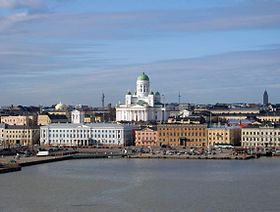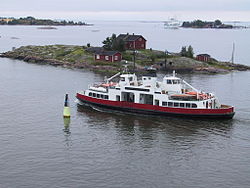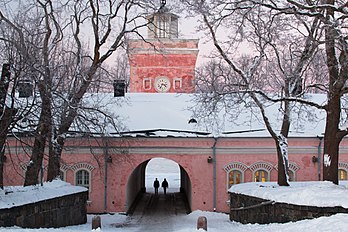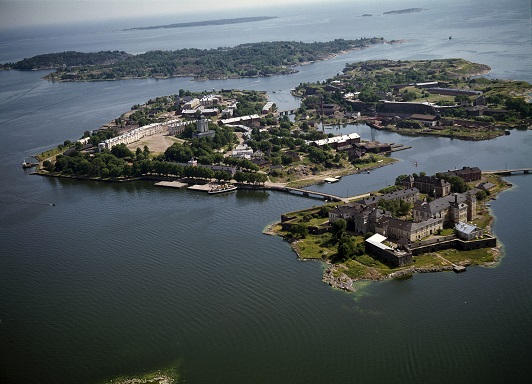
Air photo of Suomenlinna - Sveaborg - Viapori - basic translation in English is Fortress Finland. The sea fortress-system was once built on many islands off the coast of Helsinki (all islands not seen in the picture). Now Suomenlinna is a UNESCO World Heritage Site. Photo: Helsingin kaupunginmuseo, SKY-FOTO Möller.
During the early 1700's the Swedish Empire lost two significant wars against the Tsardom of Russia, the Russian Empire and the coalitions against Sweden - the Great Northern War (1721) and the Russo-Swedish War of 1741-1743, the results signified the end for the Swedish Stormakstiden (era of Swedish Empire as a Great Power). Sweden lost the Baltic Territories, possessions in Bremen-Verden and in Western Pomernia, Ingria, the eastern parts of Finland. Losing the fortified borderland the Swedish Parliament accepted and proceeded to build the Sveaborg - the mightiest sea fortress in Europe to protect and save Sweden from the foes and enemies.
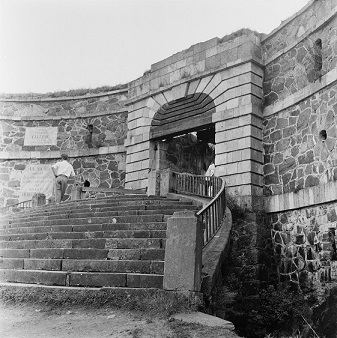
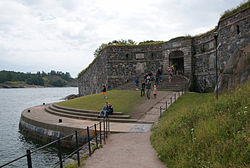
Kuninkaanportti - the King's Gate and the wharf of the King's Gate. The sight is considered one of the most significant and important symbols of Suomenlinna. It's the original entrance to the bastion-system during the 1700's. The area was the place for the Swedish King - Adolf Fredrik, he anchored the ship on to the wharf and walked through the gate to an inspection tour to watch and supervise the Sveaborg construction site. Left photo: Helsingin kaupunginmuseo, Bonin Volker von.
The posterity, stand firm here, on your own land, and don't you rely on the foreign aid - Augustin Ehrensvärd's (the foreman and the supervisor of the Sveaborg Construction) words on the marble plaques on the wall at the King's Gate.
Building and constructing Sveaborg started in 1748. The sea fortress was never fully completed. However, only half-completed it possessed a great threat for the Russian Empire while being a decisive and a strong port for the Swedish Coastal Navy at the Gulf of Finland. During the 40-years-building-era 8km of fortress wall, towers, gun nests and pits were built by the Finnish Allotment Army. Suomenlinna - Sveaborg - Viapori was a garrison city on the islands, just 4km away from the city of Helsinki. In addition the garrison had more citizens (3 000) than today's capital of Finland back then. It was the greatest military- and naval fort/port ever built by Sweden.
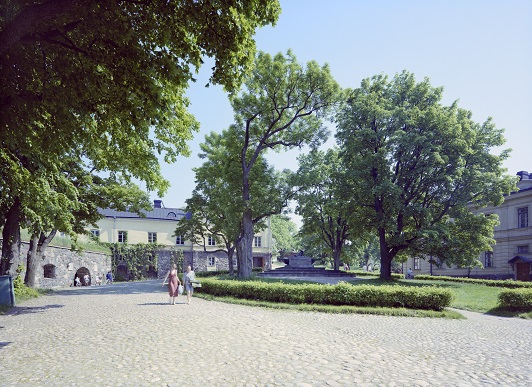
Today Suomenlinna is still inhabited (suburb). It's popular among the tourists visiting in Helsinki. This is the Great Fortress Yard, in the middle of the trees is the tomb of Augustin Ehrensvärd with beautiful decorations, esteeming the past times.
The bigger the fort, the bigger are the battles is a common view of people. Well, not exactly. Suomenlinna was a mighty sea fortress and a garrison city. Its participation for the warfare is however limited. Perhaps the time and interest overwhelmed the fortress, or then Suomenlinna really succeeded in being the bolt and the safeguard of the Kingdom of Sweden. The following are warfare which Sveaborg-Suomenlinna-Viapori took part:
- The First and the Second Battle of Svenskund 1789-1790. Sveaborg was a naval base for the Swedish Coastal Navy. The Second Battle of Svenskund is the greatest victory of the Navy of Sweden and one of the largest naval combats ever fought
- In the Finnish War 1808-1809 the Russian Empire easily captured Sveaborg
- During the Russian era barracks and hospitals were raised and built in Viapori - building the fortress was left for secondary - during the Crimean War the English-French Navy inflicted heavy damage for Viapori by naval bombardment
- During the bloody aftermath of the Finnish Civil War Suomenlinna was a prison and an execution site for Red Guard prisoners of war
- In the WWII Suomenlinna was the major port for the Finnish submarines, intelligence activity, anti-aircraft base
- The Finnish Academy of Naval Warfare still active
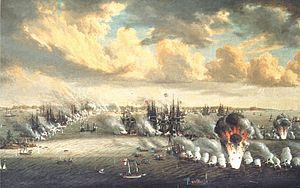

The Second Battle of Svenskund (1790) between the Kingdom of Sweden and the Russian Empire. Finnish Navy High-Command-in-Chief inspecting cadets of the Academy of Naval Warfare near Suomenlinna Church Fields in 1943.
Suomenlinna is a UNESCO World Heritage Site, settled and recognized in 1991. It's a home for 800 people. A ferry connection is attached with the public transportation of Helsinki with a ferry leaving every 8-15 minutes. Helsinki and Suomenlinna is also connected by tunnels under the sea (not for the public). Also there are many interesting, but dangerous tunnels built during the 1700's-1800's connecting the bastion-system, for the supply and ammunition delivery. Suomenlinna is visted by over million people in a year - it's well-known and the cultural heritage is indetermined.
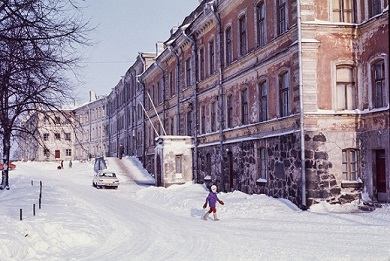
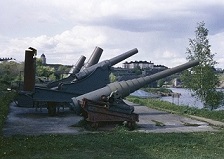
A street view during the 1970's in Suomenlinna. In the 2017 movie, the Unknown Soldier, the Finnish military parade of Petrozavodsk was filmed in the same streets. Right picture, the Sveaborg guns fired for the last time during the Crimean War. Photos: Helsingin kaupunginmuseo, Jalmari Aarnio and Constantin Grunberg.
Last edited:


.png)
